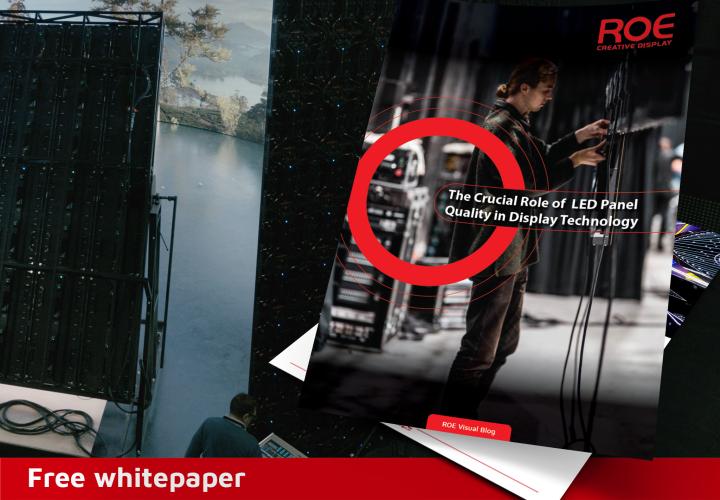
HELIOS LED Processing Technology
Breakthroughs in LED Processing Performance
Introduction
As direct-view LED pixel pitches get finer, a moderately sized display can quickly go beyond 4K/UHD resolution. While image resolution is important, other image quality differentiators such as dynamic range, contrast ratio, frame rate, bit depth, and color gamut are equally important to image quality. The processing system that is used to drive direct-view LED displays must be equipped with the right features to address and support these important elements beyond simply lighting up the pixels.
With this in mind, what can be done at a processing level to maximize the output performance of the latest LED technologies? In the next few sections of this whitepaper, you will see a series of photographs of actual LED screens performing side-by-side. The images will demonstrate how superior processing results in optimal visual performance, especially in the near-black portion of the grayscale range. All of these displays are of the same model number and production batch for a fair and proper performance comparison.

Components of Near-Black Video Performance
This whitepaper will focus primarily on the near-black region of Megapixel’s HELIOS LED Processing Platform. There are three major attributes that contribute to processing quality in this video region:
- Grayscale bit-depth
- Gradient smoothness
- Gamma tracking
Grayscale bit-depth and gamma tracking are technical software and hardware performance features that make a display objectively better — these elements can be measured and graphed for accuracy. Gradient smoothness, on the other hand, is often content-related and upstream of a display, yet this attribute can also be improved upon via processing algorithms. Viewers often incorrectly interchange the terms “grayscale” and “gradient” performance, however they are not the same, as will be demonstrated in the subsequent sections. Note: Grayscale is a range of monochromatic shades from black to white. Poor gradient smoothness, or banding, can manifest as visible stripes within a gradation of shades of color.

Grayscale Bit-Depth
Grayscale bit-depth dictates the number of steps that a display can produce within a range of 0-100%. In the case of an LED display, 0% is “off.” The most vital metric is the lowest threshold at which an LED actually illuminates. The sooner an LED lights up within a low-end ramp, the better the performance and image quality, especially for HDR content with details in the shadows. In the above photos, an observer can see that the light output of the left tile falls off to black much sooner than the right tile. The right tile running on HELIOS retains video information displaying closer to black, thus objectively showing that the display is yielding a better bit-depth performance than the traditional processing in the left tile.
Fill in the form below to download the full whitepaper.
Related items

LED Processing Software Updates
Our LED processing partners have released three significant software updates, introducing a range of enhancements to Brompton, Megapixel, and iSet. These updates bring several improvements, all aimed at optimising performance and efficiency. Read on to explore the key improvements and their impact on your workflow.

IBC Inspirational Panel Sessions
ROE Visual brought inspiring panel sessions to IBC 2024! Enjoy the recordings of these panel sessions, featuring top industry specialists in XR, virtual production, and live broadcast. The panel sessions include in-depth case studies, such as the BBC UEFA Broadcast Studio, the commercial potential of VP highlighted by "The Garage," broadcast strategies for elections, and insights into the development of the Gran Canaria Film Studio.

The Crucial Role of LED Panel Quality in Display Technology
When it comes to high-quality visual displays, the spotlight often falls on the sophistication of LED processors, but the significance of the LED panel itself should not be underestimated. The intrinsic quality of the LED panel plays a pivotal role in achieving an unparalleled visual experience.

